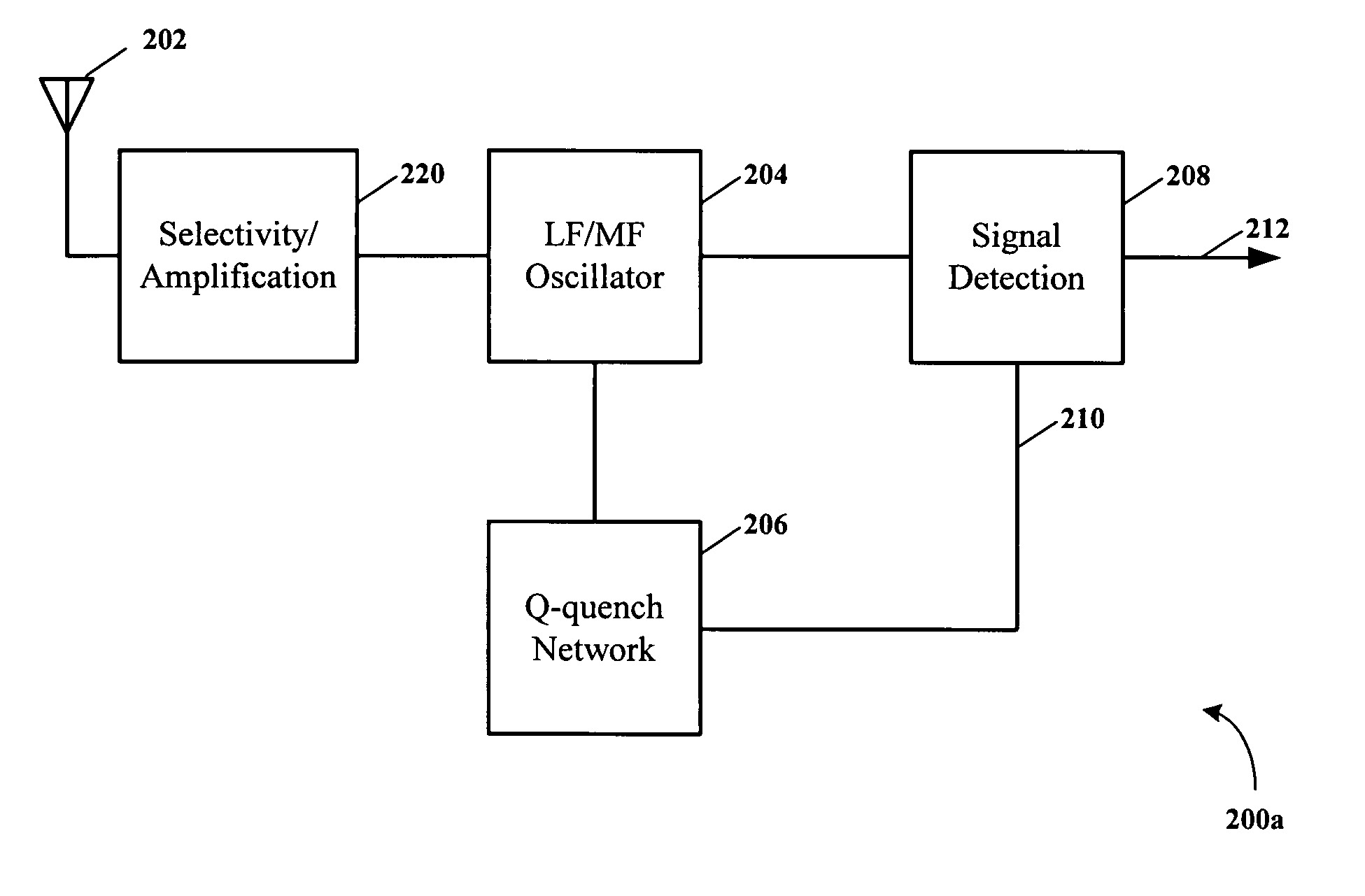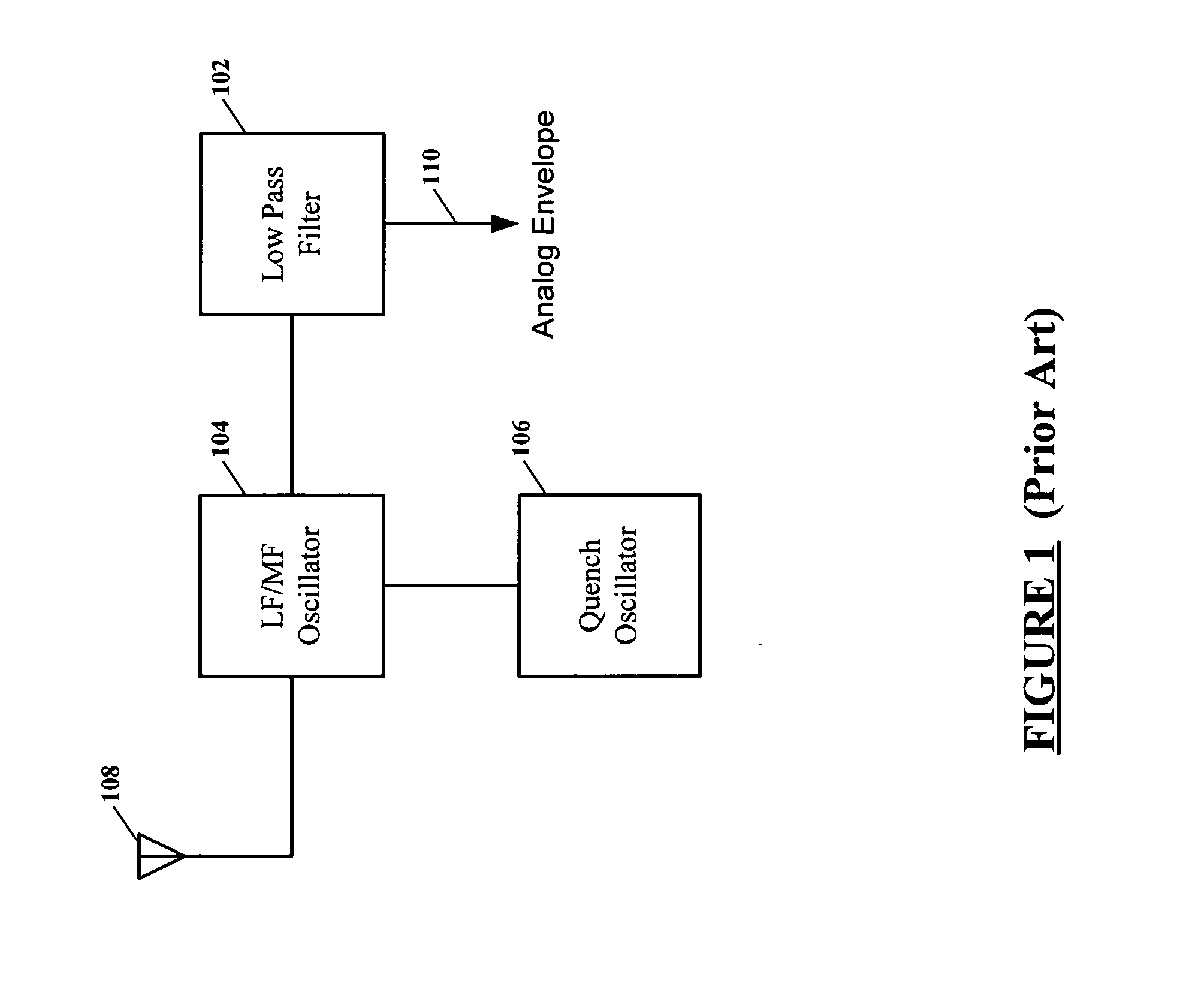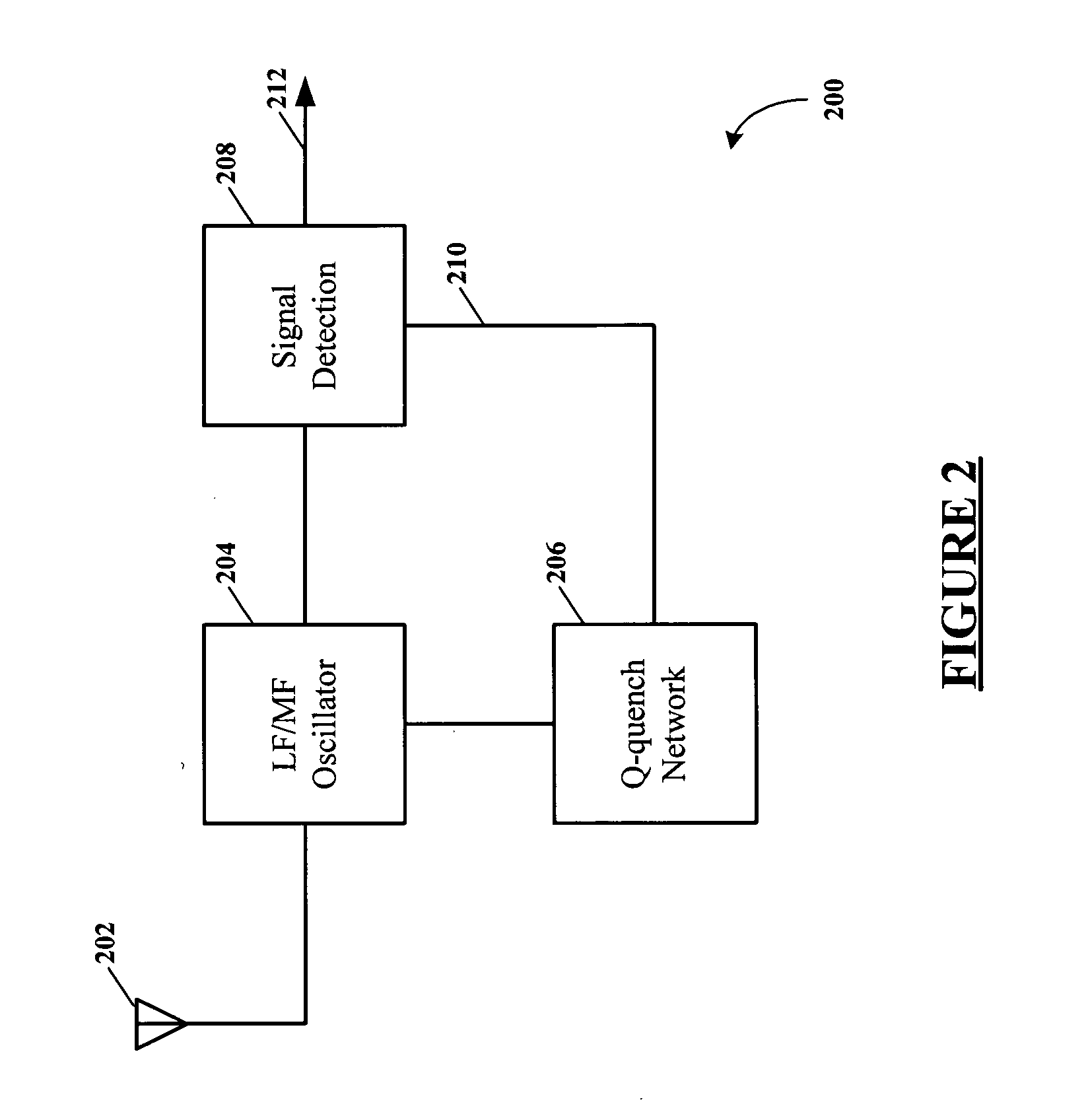Q-quenching super-regenerative receiver
a super-regenerative receiver and receiver technology, applied in the field of radio frequency receivers, can solve the problems of low-cost and sensitive radio frequency receivers, keep such receivers out of the mass market, and current technology solutions are fairly expensive, so as to reduce the noise of quenching and regenerative receivers. , the effect of reducing the radiated noise of the receiver circuit and reducing the cos
- Summary
- Abstract
- Description
- Claims
- Application Information
AI Technical Summary
Benefits of technology
Problems solved by technology
Method used
Image
Examples
Embodiment Construction
[0026] Referring now to the drawings, the details of exemplary embodiments of the present invention are schematically illustrated. Like elements in the drawing will be represented by like numbers, and similar elements will be represented by like numbers with a different lower case letter suffix.
[0027] Referring to FIG. 1, depicted is a schematic block diagram of prior art super-regenerative receiver. Regenerative detectors are basically oscillators to which an input signal has been coupled. In a straight regenerative circuit, the input signal is coupled to the detector and then “regenerated” to very high levels by feeding back in phase a portion of the output signal of the detector to the input of the detector, until just before or just at a critical point where a self sustaining oscillation begins. A super-regenerative receiver uses an oscillating regenerative detector that is periodically shut off or “quenched.” Super-regeneration allows the received signal to be regenerated over...
PUM
 Login to View More
Login to View More Abstract
Description
Claims
Application Information
 Login to View More
Login to View More - R&D
- Intellectual Property
- Life Sciences
- Materials
- Tech Scout
- Unparalleled Data Quality
- Higher Quality Content
- 60% Fewer Hallucinations
Browse by: Latest US Patents, China's latest patents, Technical Efficacy Thesaurus, Application Domain, Technology Topic, Popular Technical Reports.
© 2025 PatSnap. All rights reserved.Legal|Privacy policy|Modern Slavery Act Transparency Statement|Sitemap|About US| Contact US: help@patsnap.com



